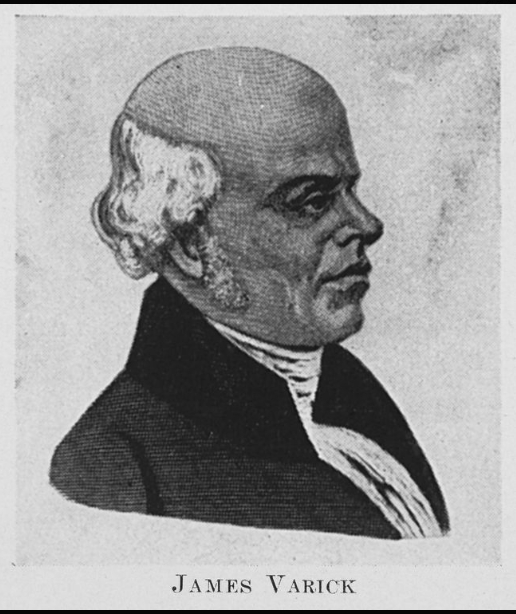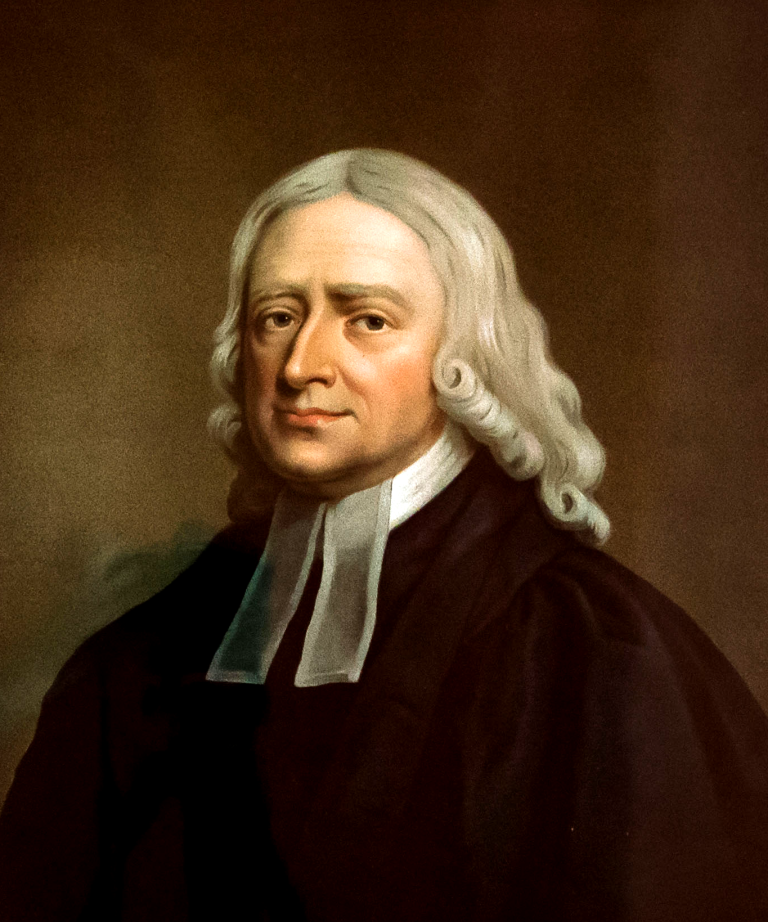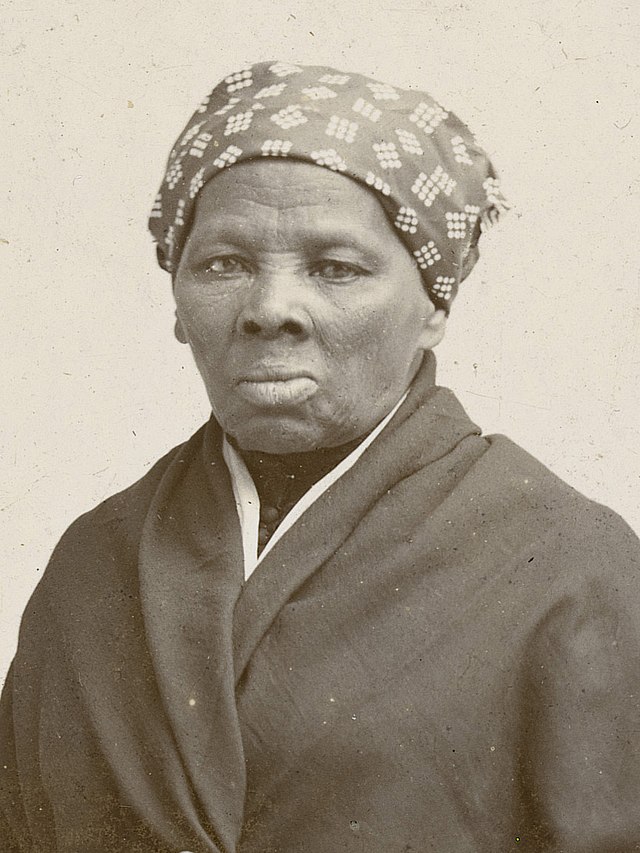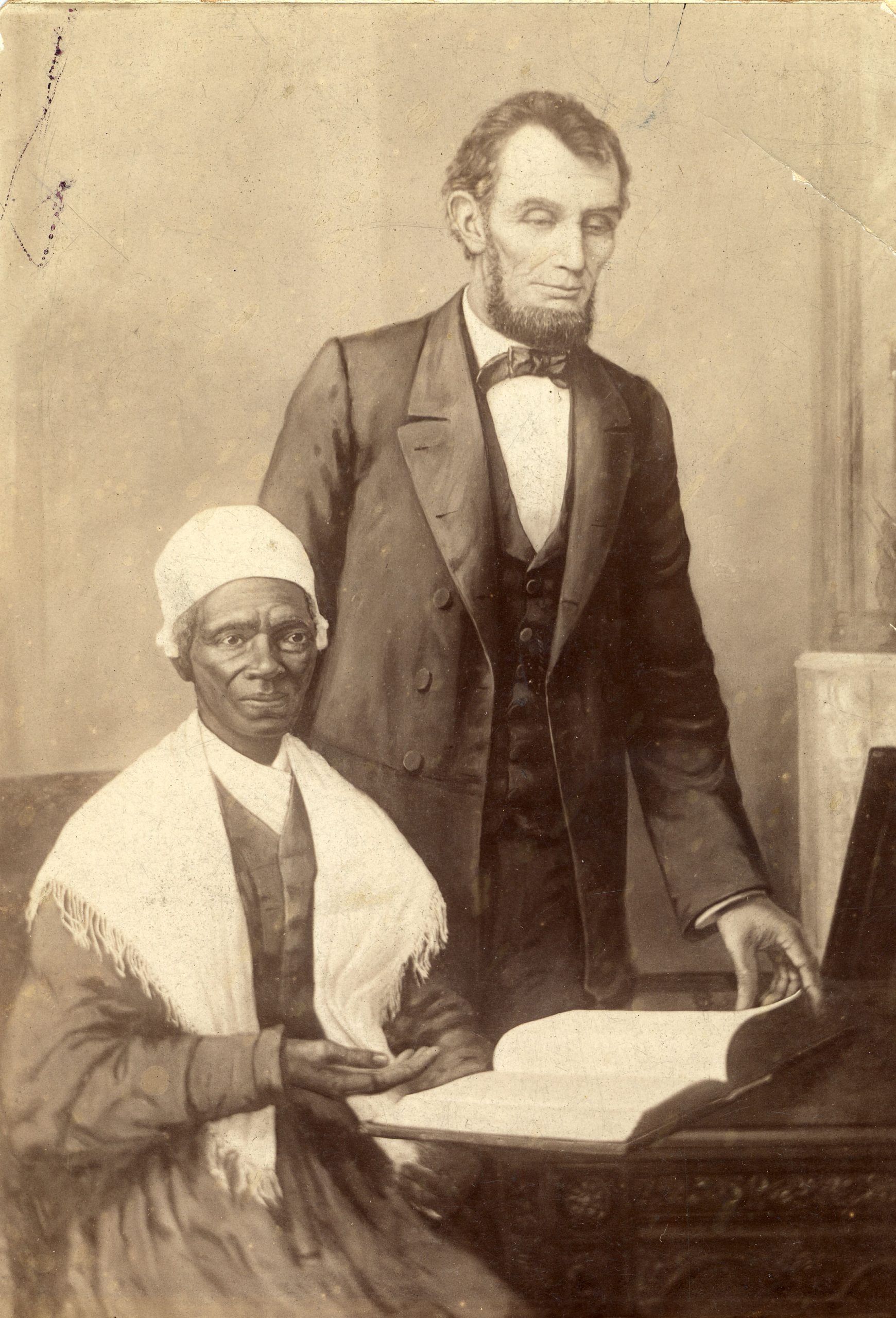The Freedom Church
ABOUT THE AFRICAN METHODIST EPISCOPAL ZION CHURCH
James Varick
Was the founder and first bishop of the African Methodist Episcopal Zion Church. Varick was born to a slave mother near Newburgh, New York. His father was Richard Varick, a free black man who was originally from Hackensack, New Jersey. Varick grew up with his parents in New York City, where it is thought that he may have attended the Free School for Negroes. After this schooling, Varick was trained in the trade of shoemaking.
In 1766, Varick, now free, joined the John Street Methodist Episcopal Church, which had a predominately white congregation. Eventually Varick became a minister and was licensed to preach at John Street Church. Although he was not the main minister, his appointment to the pulpit as the Church’s first black preacher caused considerable racial tension and calls for racial segregation of the congregation. Eventually black parishioners were forced to sit in the galleries or the back row seating. Incensed at this change in church policy Varick and thirty other black members withdrew from the church in 1796.
In 1790, Varick married Aurelia Jones. The couple had seven children, four of whom survived into adulthood. During this time Varick worked as a shoemaker and a tobacco cutter in order to support his family.
In 1800, Varick and those who had seceded from the John Street Methodist Episcopal Church started their own place of worship, which they dubbed the “Zion” church which was located a few blocks from Wall Street. In 1806, Varick and three other men became the first three ordained black deacons in New York. In 1818 Varick helped found the African Methodist Episcopal Church in New Haven, Connecticut. He was also one of the vice-presidents of the New York African Bible Society
Varick was a strong opponent of slavery and openly supported its abolition. He often preached sermons on this subject and fought for equal rights for African Americans, the most notable being the “Sermon of Thanksgiving on the Occasion of the Abolition of the African Slave Trade,” on January 1, 1808.
In 1821, Varick and other black New York City leaders petitioned the New York State Constitutional Convention to grant blacks the right to vote. Six years later Varick helped establish Freedom’s Journal, the first black newspaper in the United States.
As other independent black Methodist churches emerged in the Northeast, Varick in 1821 led the movement to establish a new denomination which would be know as the African Methodist Episcopal Zion Church (as opposed to the African Methodist Episcopal or AME Church founded in the same period by Rev. Richard Allen). The next year Varick was elected the first bishop of the AME Zion church, and was re-elected for a second term at the second annual conference in 1824. On July 4, 1827, Varick and his congregation celebrated victory when New York finally enacted the final emancipation of Negro slaves. Two weeks after the celebration Varick passed away in his New York City home.
Sources:
Rayford W. Logan and Michael R. Winston, eds., Dictionary of American Negro Biography (New York: W.W. Norton, 1982); Anne H. Pinn and Anthony B. Fortress, Introduction to Black Church History (Minneapolis: Augsburg Press, 2002).

John Wesley
June 28, 1703 –March 2,1791 was an Anglican minister and theologian who, with his brother Charles and fellow cleric George Whitefield, is credited with the foundation of Methodism. His work and writings also played a leading role in the development of the Holiness movement and Pentecostalism.
Educated at Charterhouse School and Oxford University, Wesley was elected a fellow of Lincoln College, Oxford in 1726 and ordained a priest two years later. Returning to Oxford in 1729 after serving as curate at his father’s parish, he led the Holy Club, a society formed for the purpose of the study and the pursuit of a devout Christian life; it had been founded by his brother Charles and counted George Whitefield among its members. After an unsuccessful ministry of two years at Savannah in the Georgia Colony, Wesley returned to London and joined a religious society led by Moravian Christians. On 24 May 1738, he experienced what has come to be called his evangelical conversion when he felt his “heart strangely warmed”. He subsequently departed from the Moravians, beginning his own ministry.
A key step in the development of Wesley’s ministry was, like Whitefield, to travel and preach outdoors. In contrast to Whitefield’s Calvinism, Wesley embraced the Arminian doctrines that dominated the Church of England at the time. Moving across Great Britain and Ireland, he helped form and organize small Christian groups that developed intensive and personal accountability, discipleship and religious instruction. Most importantly, he appointed itinerant, unordained evangelists to travel and preach as he did and to care for these groups of people. Under Wesley’s direction, Methodists became leaders in many social issues of the day, including prison reform and the abolition of slavery.
Although he was not a systematic theologian, Wesley argued for the notion of Christian perfection and against Calvinism – and, in particular, against its doctrine of predestination. He held that, in this life, Christians could achieve a state where the love of God “reigned supreme in their hearts”, giving them outward holiness. His evangelicalism, firmly grounded in sacramental theology, maintained that means of grace were the manner by which God sanctifies and transforms the believer, encouraging people to experience Jesus Christ personally.
Throughout his life, Wesley remained within the established Anglican church, insisting that the Methodist movement lay well within its tradition. Although sometimes maverick in his interpretation and use of church policy, he became widely respected and, by the end of his life, had been described as “the best-loved man in England”.

Harriet Tubman
Originally named Araminta, or “Minty,” Harriet Tubman was born on the plantation of Anthony Thompson, south of present day Madison and Woolford in an area called Peter’s Neck in Dorchester County, on the Eastern Shore of Maryland. Tubman was the fifth of nine children of Harriet “Rit” Green and Benjamin Ross, both slaves. Ben Ross was a timber inspector who supervised and managed Thompson’s significant timbering interests on the Eastern Shore, earning him a reputation as a highly prized and respected bondsman. Thompson, a successful planter, and businessman enslaved more than forty African Americans during his lifetime. This slave community, and the free and other enslaved black communities that provided the labor for the white planters in the Peter’s Neck area, constituted the familial and social world of Harriet Tubman and her family
Thompson’s second wife, Mary Pattison Brodess, and her young son, Edward, legally owned Tubman, Tubman’s mother, and siblings. It was through Thompson’s marriage to Mary Brodess that Ben Ross and Rit Green met, finally marrying and starting their own family around 1808. According to laws enacted during the seventeenth century in the American colonies, any children born to an enslaved woman were automatically slaves, and ownership fell to the mother’s owner, even if the father was a free black or a white man. Ben and Rit’s family grew over the next few years; Linah was born about 1808; she was followed by Mariah Ritty in 1811, Soph in 1813, Robert in 1816, and then Minty, or Harriet Tubman, in 1822.
Thompson had married Edward’s widowed mother when Edward was a small child, and after she died in 1810, Thompson became young Edward’s guardian. Thompson remained in that role until Brodess reached the age of twenty-one in 1822, the legal age at which Edward could claim independence and his rights to his inheritance, which included Rit and her children. By 1824, Tubman, her mother, and her siblings were forced to move away from Ross and the Thompson plantation, to Brodess’s own farm in Bucktown, a small agricultural village, ten miles away. Though separated from their father, Tubman and her siblings maintained strong bonds with the black community surrounding Thompson’s plantation, which provided a consistent and nurturing force throughout Tubman’s unstable childhood and young adulthood
Tubman’s family eventually grew larger with the addition of another sister, Rachel, born around 1825, and three more brothers, Ben in 1823, Henry in 1830, and Moses in 1832. Tubman later recalled having to care for her younger siblings when she was as young as five years old, while her mother was forced to leave them alone in their cabin while she worked in the “big house,” as the master’s home was called. The dangers inherent in leaving such young children alone to fend for themselves was just one of the many daily threats and injustices endured by enslaved families.
Tubman said that she spent little time living with Brodess; he often hired her out to temporary masters, some of whom who were cruel and negligent. She recalled being whipped daily as a very young child by an exacting mistress, who left scars still visible eighty years later. She was also forced to labor in icy cold winter waters setting muskrat traps. This work made her so weak and sick that she was repeatedly returned to Brodess as useless. Once restored to health by her mother, Tubman would be hired out again and again. These separations from her family exacted a heavy toll on her, and she suffered intense loneliness and fear throughout her childhood. Brodess, in the meantime, also hired out other members of Tubman’s family; his farm was too small to productively use all the enslaved labor he owned. Brodess also sold some of his enslaved people, including three of Tubman’s sisters, Linah, Mariah Ritty, and Soph, to out-of-state buyers, permanently fracturing her family. Linah and Soph were both forced to leave young children behind.
At this time, the Eastern Shore of Maryland was experiencing a significant agricultural and economic decline. The invention of the cotton gin (in 1793) drove rapid expansion into the Deep South and southwest territories during the early part of the nineteenth century, as farmers rushed to clear and develop land for cotton production.
The cultivation and harvesting of cotton required a large labor force and the demand for enslaved labor to work these vast cotton plantations grew rapidly. The trans-Atlantic slave trade (from Africa to North America) had been declared illegal in 1808, leaving intra-regional slave trading as the only legal option for expanding southern agricultural interests desperate for labor. On the Eastern Shore, the transformation from tobacco production, which required a large full-time labor force, to one of grain production, which required less labor-intensive work, created a surplus of enslaved labor. Slave owners throughout the Chesapeake region found a ready market for their enslaved people, and thousands from the Eastern Shore were torn from their families and sold to work in the cotton and agricultural fields of the Deep South.
The loss of Linah, Mariah Ritty, and Soph brought great sorrow and anger to the Ross family. Brodess turned the proceeds from their sales into land purchases to expand his own Bucktown farm. This injustice was only compounded by Brodess’s refusal to liberate Rit when she was forty-five years old, as required under the will of his great-grandfather, Atthow Pattison, who had owned Rit when she was a child. Brodess claimed Rit through his dead mother’s and as the heir to Pattison’s estate. Tragically, he refused to honor his obligation to free Rit under the terms of Pattison’s will, which also provided for the liberation of Rit’s children once they reached the age of forty-five as well.
It was late fall, sometime between 1834 and 1836, when Tubman was nearly killed by a blow to her head from an iron weight, thrown by an angry overseer at another fleeing slave. Tubman had been hired out as a field hand to a neighboring farmer, and one evening she was called to accompany the plantation cook to the local dry goods store to purchase items for the kitchen. When they arrived at the store, Tubman attempted to block the path of the overseer who was in pursuit of a defiant slave boy. The overseer picked up a weight from the store counter and threw it, intending to fill the fleeing young man, but it struck Tubman with such crushing force that it fractured her skull and drove fragments of her shawl into her head. Near death, she was forced to return to work in the fields. Seventy years later Tubman told a friend, Emma Telford, “I went to work again and there I worked with the blood and sweat rolling down my face till I couldn’t see.” She was quickly sent back to Brodess, who attempted to sell her, but no buyer was interested in purchasing a sick and wounded slave. “They said they wouldn’t give a sixpence for me,” Tubman later told Sarah Bradford, another friend and early biographer. The severe injury left her suffering from headaches, seizures, and periods of semi-consciousness, probably Temporal Lobe Epilepsy, which plagued her for the rest of her life. This injury caused her great pain and suffering. The head injury also coincided with an explosion of religious enthusiasm and vivid visions, which eventually took on an important role in Tubman’s life. This intense spirituality, punctuated by potent dreams that she claimed foretold the future, influenced not only her own courses of action but also the way other people viewed her. Tubman’s religiosity was a deeply personal spiritual experience, unquestionably rooted in powerful evangelical teachings, but also reinforced and nurtured through strong African cultural traditions. She and her family probably integrated a number of religious practices and ideas into their daily lives, such as Episcopal, Baptist, and Catholic teachings, all religious denominations supported by local white masters intimately involved with Tubman’s family. Many slaves were required, like Tubman’s family, to attend the churches of their owners and temporary masters.
Whatever her place of worship, there can be no doubt Tubman’s faith was deep and founded upon strong religious teachings. Thomas Garrett, a famous Underground Railroad agent, later wrote of Tubman that he “never met with any person, of any color, who had more confidence in the voice of God, as spoken direct to her soul . . . and her faith in a Supreme Power truly was great.” Regardless of the exact nature of Tubman’s religious instructions, daily survival remained her biggest challenge. Her profound faith and the care and nurturing of family and friends helped her survive her darkest hours.
After a lengthy recovery period, Tubman was hired out to John T. Stewart, a Madison, Dorchester County, farmer, merchant, and shipbuilder, bringing her back to the familial and social community near where her father lived and where she had been born. Laboring first in Stewart’s house, she soon began working in his fields, docks, and timber yards, exhibiting great feats of strength and endurance. Enslaved women often preferred outdoors or fieldwork, if only to escape the tyranny of demanding mistresses and the sexual advances of white men in the household. Brodess eventually allowed Tubman to hire herself out, after paying him a yearly fee of sixty dollars for the privilege to work for herself. This allowed her to earn enough money to buy a pair of oxen, enabling her to maximize her wage earning potential, and perhaps offering the possibility of one day buying her own freedom
Being close to her father also brought other rewards. Through him, and through her work on the docks and on a timber gang, Tubman learned the secret networks of communication that were the provenance of black men, particularly black mariners. Tubman became part of an exclusively male world. Here, beyond the watchful eye of white masters, Tubman’s father, and others passed along the map of communication networks of black mariners whose ships carried the timber and other goods to the Baltimore shipyards. They were part of a larger world of towns and cities up and down the Chesapeake Bay, into Delaware, Pennsylvania, and New Jersey. They knew the safe places and, more importantly, they knew the danger. Tubman’s unique ability to effectively use this complicated network, combined with well-practiced skills of disguise and deception, would help her act on her own growing consciousness of the horrors of slavery. “Slavery,” she said, “is the next thing to hell.”
Around 1844, Minty Ross married John Tubman, a free man at least five years her senior. John had been born to free parents, but like many of his siblings and other friends and relatives, he married an enslaved woman with whom he had no legal rights. Because Minty was enslaved and legally owned by Edward Brodess, and though her marriage was spiritual and accepted by the community within which she lived it had no legal standing. Any children born to them would have become the property of Edward Brodess – neither John nor Harriet had any rights to them. They could be sold or given away at the whim of Edward Brodess. John Tubman could have married a free woman – half the black population of about 9,000 people in Dorchester County at that time were free – but his love for Harriet must have been strong for him to forfeit any rights he might have as a husband and a father.
When Edward Brodess died in March 1849, the security of Harriet and John’s life together was threatened. Knowing she was about to be sold, Tubman fled to freedom without him. She soon learned he was not interested in joining her in the North, and he married another woman in the community – a free woman named Caroline with whom he had four free children. Broken hearted, Tubman, refusing to sacrifice her freedom by returning and fighting for her marriage, instead committed herself to liberating her family and friends. From 1850 to 1860, Tubman would return to Maryland to rescue scores of family and friends. For more information on her own escape and rescue missions along the Underground Railroad, “Harriet Tubman’s Flight to Freedom” and “Harriet Tubman and the Underground Railroad” above.
In the early spring of 1858, Tubman met the legendary John Brown, a radical abolitionist and fiery freedom fighter, at her home in St. Catharines, Ontario, Canada, where she had settled with her brothers, parents and other runaways from American slavery. Tubman’s remarkable ability to travel undetected in slave territory piqued Brown’s interest; he was so impressed by her genius that he referred to her as “General Tubman.” She became a devoted supporter and confidante, helping Brown plan to liberate slaves through a surprise attack on the federal arsenal at Harper’s Ferry, Virginia in 1859. Possibly ill and unable to travel at the appointed time, Tubman was not by Brown’s side when he launched his attack in October. Brown and most of his small band of fighters were killed or later hanged for treason. Tubman believed, however, that Brown was a martyr for freedom, and that he was the greatest white man she had ever met.
The winters in St. Catharines, Ontario, Canada were too severe for Tubman’s parents. In 1859, William Henry Seward, Lincoln’s Secretary of State, sold Tubman a home on the outskirts of Auburn, New York, where she settled her aged parents and other family members. Surrounded by ardent abolitionists, such as Martha Coffin Wright and Gerrit Smith of Peterboro, Tubman’s family was supported and protected. Money was a constant worry for her, though. Tubman turned to the antislavery lecture platform as a means to raise money for both her family and her missions. Starting in the spring of 1858, she became a fixture at abolition and suffrage meetings throughout Central New York and the Boston area, sometimes under the pseudonym “Harriet Garrison” to protect her from slave catchers. Increased vigilance on the part of slaveholders on the Eastern Shore made her more vulnerable to capture and return trips to rescue the rest of her family became too risky. But she continued to fight against the slave system. On her way to Boston in April 1860, Tubman became the heroine of the day when she helped rescue a fugitive slave, Charles Nalle, from the custody of United States Marshals charged with returning him to his Virginia master under the provisions of the Fugitive Slave Act of 1850
Tubman became politicized very early on, attending antislavery meetings, black rights conventions, and women’s suffrage meetings throughout the latter part of the 1850s. It was not long before Tubman found herself challenging women’s and African Americans’ inferior political, economic and social roles. A trustworthy network of active reformers, such as abolitionists and suffragists Lucretia Mott, Susan B. Anthony, Martha Coffin Wright, Frances Ellen Watkins Harper, Ednah Dow Cheney, Caroline Dall, and activists Frederick Douglass, Lewis Hayden, John Rock, William Wells Brown, William Lloyd Garrison, Franklin Sanborn, and Wendell Phillips, proved worthy in Tubman’s eyes. They were devoted to equality and justice, and they often risked their own lives and livelihoods to defend and protect runaway slaves. Among them, she found respect and the financial and personal support she needed to pursue her private war against slavery on the Eastern Shore of Maryland. The ideologies of racial and gender equality, which Tubman incorporated into her life during the 1850s, would become central to her activism for the remainder of her life.
Tubman’s total commitment to destroying the slave system eventually led her to South Carolina during the Civil War, where she alternated her roles as nurse and scout, cook and spy, in the service of the Union army. Eventually, she became the first American woman ever to lead an armed raid into enemy territory. In early 1862, Tubman joined Northern abolitionists in support of Union activities at Port Royal, South Carolina. Throughout the Civil War, she provided badly needed nursing care to black soldiers and hundreds of newly liberated slaves who crowded Union camps. Tubman’s military service expanded to include spying and scouting behind Confederate lines. In early June 1863, she became the first woman to command an armed military raid when she guided Colonel James Montgomery and his Second South Carolina Black regiment up the Combahee River, routing out Confederate outposts, destroying stockpiles of cotton, food, and weapons, and liberating over seven hundred slaves.
Later that summer, Tubman witnessed the carnage inflicted upon the all-black Massachusetts Fifty-Fourth Regiment on 19 July 1863, at Fort Wagner. She later told an interviewer that she served the regiment’s white colonel, Robert Gould Shaw, his last meal. She had become quite familiar with Shaw and his regiment, which included Frederick Douglass’s two sons, Lewis and Charles since they had arrived in Beaufort six weeks before. Tubman’s description of that fateful day would long be remembered: “And then we saw the lightning, and that was the guns; and then we heard the thunder, and that was the big guns, and then we heard the rain falling, and that was the drops of blood falling; and when we came to get in the crops, it was the dead that we reaped.” Union losses were horrific: 1,515 dead, wounded, missing, or captured, compared to only 174 Confederate casualties. The injured were transported to Beaufort, where Tubman provided nursing and comfort to hundreds of casualties.
After the war, Tubman returned to Auburn, New York. There she began another career as a community activist, humanitarian, and suffragist. In addition to providing a home for numerous friends and relatives, she also worked to raise money for the Freedmen’s Bureau, which had been established to provide education and relief to millions of newly liberated slaves. In 1869, a local author named Sarah Bradford published a short biography titled “Scenes in the Life of Harriet Tubman” bringing brief fame and financial relief to Tubman and her family. Tubman married Nelson Davis, a veteran, that same year; her husband John had been killed in 1867 in Dorchester County, Maryland. She struggled financially the rest of her life, however. Denied back pay for her scouting services during the Civil War, she did receive a widow’s pension as the wife of Nelson Davis, and, later, a Civil War nurse’s pension, during the 1890s.
Her humanitarian work triumphed with the opening of the Harriet Tubman Home for the Aged, located on land abutting her own property in Auburn, which she successfully purchased by mortgage and then transferred to the African Methodist Episcopal Zion Church in 1903. Active in the suffrage movement since 1860, Tubman continued to appear at local and national suffrage conventions until the early 1900s. She died at the age of ninety in Auburn, New York.
In the spring of 1944, the National Council of Negro Women petitioned the U.S. Maritime Commission to name a Liberty ship in honor of Tubman. The Council sponsored a War Bond drive with the slogan, “Buy a Harriet Tubman War Bond For Freedom,” and on 3 June the S.S. Harriet Tubman, the first Liberty ship named for a black woman, was launched in South Portland, Maine. In 1978, the U.S. Postal Service issued its first stamp in the Black Heritage Series, commemorating Harriet Tubman. The Harriet Tubman Home for the Aged in Auburn, New York, received National Historic Landmark status in 1974, and during the 1990s, her brick residence was also declared a historic landmark as well. Harriet Tubman’s life was rooted in an intensely deep spiritual faith and a lifelong humanitarian passion for family and community, for whom she risked her very own life, demonstrating an unyielding, and seemingly fearless, resolve to secure liberty, equality, justice, and self-determination throughout her long and productive life. (Launching of the SS Harriet Tubman, June 1944. South Portland Maine. National Archives)

Sojourner Truth
Sojourner Truth (1797–1883) was an African-American abolitionist, women’s rights activist, and public speaker. Born into slavery in Swartekill, New York, she was originally named Isabella Baumfree. She escaped slavery in 1826 and later sued for the freedom of her son, becoming one of the first Black women to win a case against a white man in the United States.
Key Aspects of Her Life:
- Name Change and Mission: In 1843, Isabella changed her name to Sojourner Truth, signifying her commitment to traveling and speaking the “truth” about slavery, equality, and justice.
- Abolitionist Work: Truth was deeply involved in the abolitionist movement, working alongside figures like Frederick Douglass and William Lloyd Garrison. She was known for her powerful and direct speeches advocating for the end of slavery.
- Women’s Rights Advocacy: Truth was a prominent voice in the early women’s rights movement. At the 1851 Women’s Rights Convention in Ohio, she delivered her famous speech, “Ain’t I a Woman?”, which highlighted the double discrimination of race and gender faced by Black women.
- Religious Beliefs: Sojourner Truth was deeply religious and believed her mission was divinely inspired. Her speeches often blended spiritual themes with her advocacy for justice and equality.
- Civil War Contributions: During the Civil War, Truth supported the Union by recruiting Black soldiers and working to improve conditions for freed slaves. She also met President Abraham Lincoln in 1864 to discuss issues affecting African Americans.
- Later Years and Legacy: In her later years, Truth continued to advocate for justice, including campaigning for land grants for freed slaves. She passed away in 1883 in Battle Creek, Michigan.
Legacy:
Sojourner Truth remains a symbol of resilience, courage, and justice. Her contributions to abolitionism and women’s rights have left an indelible mark on American history. In 2009, a statue of Sojourner Truth was unveiled in the U.S. Capitol, making her the first African-American woman to be honored there.
